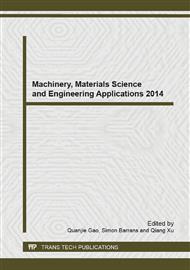p.391
p.396
p.401
p.405
p.410
p.415
p.419
p.425
p.429
Solar Array Mounting Effects on Flutter Characteristics of Solar-Powered UAV
Abstract:
Solar powered UAV has the characteristics of high aspect ratio, low structural surface density, high structural flexibility and low flutter speed. Different solar array mountings will affect the flutter characteristics of the structure. The mechanical properties of solar arrays packaged and unpackaged are measured in this paper and the solar powered UAV structural finite element model based on Patran/Nastran was also established in the paper. Two solar array mounting ways are researched: embedded solar arrays and patching solar arrays. To investigate the flutter characteristics under the two solar array mounting ways, the Doublet lattice method (DLM) aerodynamic model is used to model the unsteady aerodynamic loads. Finally, flutter speed of the structure was determined by using the P-K method and the analysis result indicate that patching solar arrays is more conductive to improve the flutter characteristics of the structure.
Info:
Periodical:
Pages:
410-414
Citation:
Online since:
June 2014
Authors:
Price:
Сopyright:
© 2014 Trans Tech Publications Ltd. All Rights Reserved
Share:
Citation:


